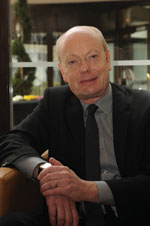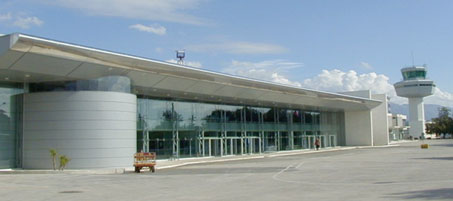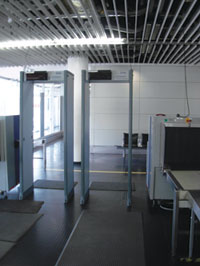
Sundin: “My point of view is that small and medium size airports are not in a situation where they can increase their fees, charges or prices to the airlines, so they really need to develop their business.”
The members of the Small and Medium Size Airports Action Group (SMAG) each play a vital role in driving economic development in their respective regions but over the last 18 months or so, due to the crisis that has gripped the global economy, these airports have been faced with a variety of stern tests.
Due to the unique nature of the industry, the aviation sector has been confronted with something of a conundrum and, according to Sundin, airports have had to find ways to continue investment despite a dramatic fall in both passenger throughput and, inevitably, profits.
“Usually, in an industry, if you have a downturn it takes time to slow down the speed of production and, eventually, you can do it,” he said. “You usually try to meet a downturn with a cut in costs but with an airport, which is based on infrastructure and long-term investments, you have continuous costs that you can’t simply ignore. Of course, our business is really dependent on the economy and we are the first ones down as it’s very easy for a company to cut their travelling costs.”
Despite the bleak nature of 2009, Sundin is, however, hopeful that the beginning of a return to stability is on the horizon and that regional airports are positively positioned to begin the long process towards recovery.

Dubrovnik International Airport is hosting this year’s ACI EUROPE Small and Medium Sized Airports Action Group (SMAG) Conference and Exhibition.
He said: “As I look at statistics and talk with my colleagues, I can see that business is starting to slowly increase and the integrators say that there have been four months of increases in cargo, which is a sign that things may be improving.” However, despite of this cautious optimism, he concedes that the outlook is “still shaky”.
Developing the business

Sundin: “ACI EUROPE has been very active within the changing of security regulations and, of course, that is an essential issue that we will focus on this year.”
In previous years, fees and charges have provided a solid source of revenue for regional airports but, with airlines equally bearing the brunt of the economic crisis, this avenue can no longer be exploited as a means to provide consistent income.
“The classic carriers have a problem in the fact that they’re making losses,” Sundin explained. “In an industry where the main operators are having a tough time financially, they need to squeeze their cost base. My point of view is that regional airports are not in a situation where they can increase their fees, charges or prices to the airlines, so they really need to develop their business.”
New markets
Naturally, the consequence of this approach is to establish just how to further non-aeronautical revenue streams. According to Sundin, a bold approach and the creation of a new market of airport visitors may be one potential solution.
“I would say that, currently, there are three main revenue streams here: the airlines, the passengers and the other renting companies, in retail, for instance,” he said. “But we now need to extend that to a fourth aspect: visitors. That’s a fourth stream that we need to increase. We need to find a way for visitors, on a much broader scale, to come to the airports.”
The hosting of conferences and exhibitions, which may not necessarily be directly related to the industry, is one example of the way the SMAG Chairman believes this “fourth aspect” can be exploited. He continued “If you can raise the value of your airport as a brand, it will become more well known and this will lead on to other revenue streams such as further advertising, for example.”
Environmental pressures

Sundin: “As I look at statistics and talk with my colleagues, I can see that business is starting to slowly increase and the integrators say that there have been four months of increases in cargo, which is a sign that things may be improving.”
As well as the tough economic climate, another major issue facing regional airports – and the industry as a whole – is the aim to achieve carbon neutrality.
Sundin said: “The time has come for airports to be more active in this area. Of course it will cost more money but, as a part of society, we don’t have a choice. The only choice we do have is to approach it in a smart way.”
These environmental ambitions resulted in the launch of Airport Carbon Accreditation at the ACI EUROPE Annual Congress last June; providing a common framework of standardised rules and requirements to measure and reduce carbon emissions from airport operations.
Efforts to manage and reduce CO2 emissions are externally assessed and recognised through four levels of accreditation: mapping, reduction, optimisation and neutrality.
While these vital environmental targets require further financial investment from airports, Sundin pointed to the efforts of LFV over the last few years which have “resulted in benefits totalling around 125 million”. That, he says, proves that creating a ‘greener’ industry shouldn’t necessarily create a further financial burden.
With security also high on the agenda, ACI EUROPE is working with regional airports to ascertain the best approach to this matter. “ACI EUROPE has been very active within the changing of security regulations and, of course, that is an essential issue that we will focus on this year. ACI EUROPE is doing a very good job on pointing out how smaller airports should approach the issue.”
Twelve months on from his appointment as Chairman of SMAG, Sundin has overseen a time of uncertainty and economic turbulence and while stability for small and regional airports is still far from secure, the outlook is more promising in comparison to this time last year. In the words of Sundin himself: “I’m much more positive and I’m beginning to see light at the end of the tunnel… and it’s not a train!”







